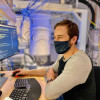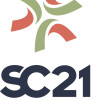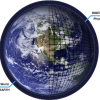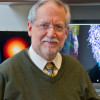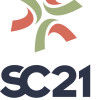News
Fire and Ice: How Arctic Sea Ice Influences Western U.S. Wildfires
New research from Pacific Northwest National Laboratory describes how climate conditions in one part of the world can, over time, influence climate outcomes thousands of kilometers away. Simulations run on Cori helped confirm this link. Read More »
Crucial Leap in Error Mitigation for Quantum Computers
Researchers at Lawrence Berkeley National Laboratory’s Advanced Quantum Testbed (AQT) demonstrated that an experimental method known as randomized compiling (RC) can dramatically reduce error rates in quantum algorithms and lead to more accurate and stable quantum computations. Read More »
SC21 Recap: Berkeley Lab Computing Sciences Research Garners Attention
Staff from Berkeley Lab Computing Sciences Area once again made significant contributions to the technical program and related workshops at the annual International Conference for High Performance Computing, Networking, Storage, and Analysis. Read More »
Perlmutter-Powered Deep-Learning Model Speeds Extreme Weather Predictions
Researchers from Berkeley Lab, Caltech, and NVIDIA trained the Fourier Neural Operator deep learning model to emulate atmospheric dynamics and provide high-fidelity extreme weather predictions across the globe a full five days in advance. Read More »
Berkeley Lab Receives Multiple 2021 HPCwire Awards
Berkeley Lab, NERSC, the Joint Genome Institute, and ESnet have been recognized by the annual HPCwire Readers’ and Editors’ Choice Awards for outstanding achievements in 2021. Read More »
NERSC Researcher Part of Gordon Bell Prize Finalist Collaboration
Rahulkumar Gayatri, an application performance specialist at NERSC, is co-author on a paper that is a finalist for the Gordon Bell Prize to be awarded at SC21. Read More »
David Brown to Step Down as AMCR Division Director in Early 2022
David Brown, who has served as the research division director in Berkeley Lab’s Computing Sciences Area for more than a decade, will step down in early 2022. Read More »
How a Novel Radio Frequency Control System Enhances Quantum Computers
A team of physicists and engineers at Lawrence Berkeley National Laboratory (Berkeley Lab) successfully demonstrated the feasibility of low-cost and high-performance radio frequency modules for qubit controls at room temperature. Read More »
Berkeley Lab Computing Sciences to Share New Research, Innovations at SC21
As they have for nearly three decades, Berkeley Lab Computing Sciences Area (CSA) staff will share their expertise with the global HPC community at this year’s Supercomputing Conference (SC21), which takes place November 14-19. Read More »
How AMReX is Influencing the Exascale Landscape
Andrew Myers — a computer systems engineer in Berkeley Lab’s Center for Computational Sciences and Engineering and a member of the AMReX core development team — looks at the influence of the AMReX software framework on a broad spectrum of scientific applications, both within ECP and outside the ECP program. Read More »







 Instagram
Instagram YouTube
YouTube
